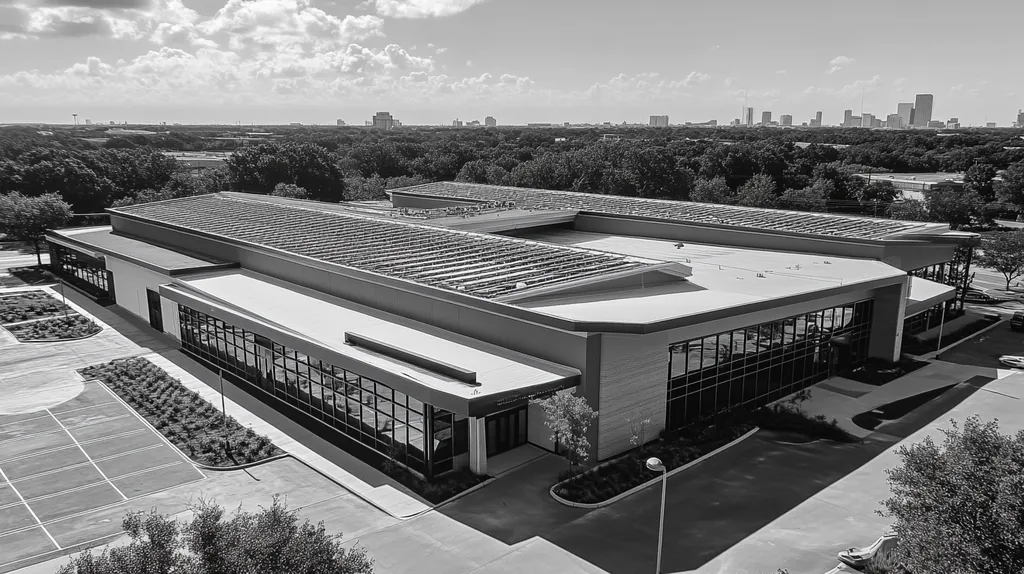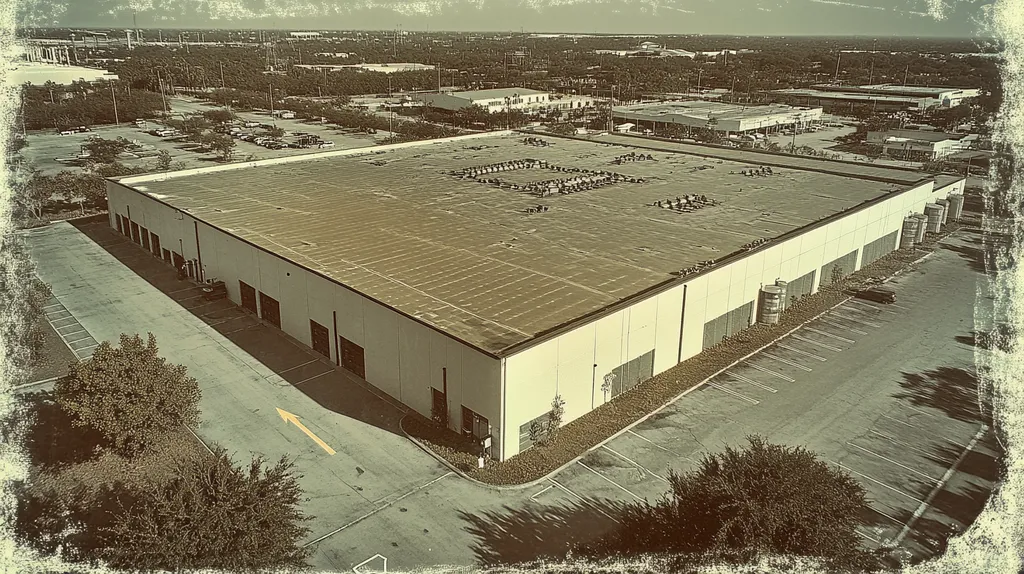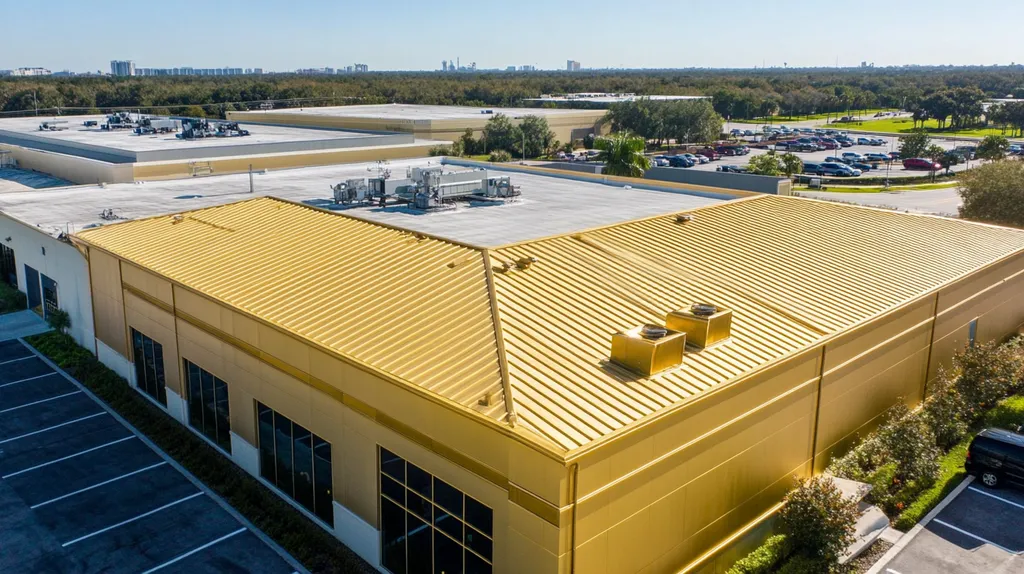Welcome to today’s Battle Royale featuring two roofing heavyweights: “Recycling Programs” in the east corner versus “Landfill Disposal” in the west!
Tonight’s showdown pits these contenders against each other across six punishing rounds designed to test every aspect of their performance for Effective Roofing Material Disposal.
At stake? Millions in potential costs, decades of building protection, and the critical performance demands of modern commercial and industrial facilities.
Our professional judging panel will evaluate each round on technical merit, real-world performance, and value delivery. After all six rounds, we’ll declare our ultimate champion.
Ladies and gentlemen, facility managers and building owners… it’s time to rumble!
ROUND 1: INITIAL COSTS & INSTALLATION
The roofing industry faces a critical turning point in waste management practices. The Environmental Protection Agency reports that construction and demolition waste, including roofing materials, makes up nearly a quarter of all landfill waste nationwide. This staggering volume demands immediate attention from property owners and facility managers who must balance cost-effective disposal with environmental responsibility. (source: EcoFriend)
Material Expenses
Initial material costs represent a significant factor in roofing project budgets. Traditional non-recyclable materials often appear cheaper upfront but carry hidden disposal costs at the end of their lifecycle.
Recycling-friendly materials, while sometimes commanding higher initial prices, often qualify for environmental incentives and rebates. These materials also typically maintain higher salvage values, offsetting their premium prices.
The growing availability of recycled content options has begun to narrow the price gap between conventional and recyclable materials. Many manufacturers now offer competitively priced recycled-content products that meet or exceed traditional performance standards.
In analyzing total lifecycle costs, recycling programs demonstrate clear financial advantages through reduced disposal fees and material recovery value. ADVANTAGE: RECYCLING PROGRAMS
Installation Complexity
Traditional landfill-bound materials benefit from decades of established installation practices. Contractors generally have extensive experience with these materials, leading to efficient installation processes.
Recyclable materials sometimes require specialized handling and installation techniques. This can necessitate additional training for installation crews and more detailed project planning.
However, as recycling-friendly materials become more prevalent, installation methods are becoming standardized. Many manufacturers now provide comprehensive training programs and technical support.
While both options present viable installation approaches, traditional materials currently maintain a slight edge in installation simplicity. ADVANTAGE: LANDFILL DISPOSAL
Project Timeline
Projects utilizing recyclable materials require careful sorting and separation during demolition and installation. This process can extend project timelines but ensures proper material recovery.
Traditional disposal methods often allow for faster project completion since materials can be removed without sorting. This approach minimizes disruption to building operations but sacrifices recovery opportunities.
Recent innovations in recycling logistics have significantly improved efficiency. Mobile sorting stations and specialized containers now enable smoother material handling without major timeline impacts.
Given the minimal difference in modern timeline requirements between the two approaches, neither option presents a clear advantage. TIE
ROUND 1 RESULTS: TIE
ROUND 2: DURABILITY & LIFESPAN
The roofing industry faces a critical sustainability challenge as materials continue to overwhelm landfills nationwide. Property owners and facility managers must carefully evaluate how their roofing choices impact both environmental sustainability and long-term operational costs. Understanding the durability and lifespan differences between recyclable and disposable materials has become essential for making informed decisions that benefit both business operations and environmental stewardship.
Material Performance
High-performance recyclable roofing materials like metal and rubber compounds demonstrate superior resistance to weathering, UV exposure, and physical stress. These materials maintain their structural integrity and protective properties significantly longer than conventional disposable options.
Traditional landfill-bound materials often show faster degradation rates, particularly under harsh weather conditions. Their shorter performance lifecycle leads to more frequent replacement needs and higher lifetime costs.
Many recyclable roofing products now incorporate advanced polymer technologies that enhance durability while maintaining their ability to be reprocessed. This combination of performance and sustainability creates compelling value for property owners.
ADVANTAGE: RECYCLING PROGRAMS
Lifecycle Analysis
Recyclable roofing materials typically offer service lives exceeding 30 years when properly maintained. Their durability reduces replacement frequency and minimizes disruption to building operations.
Conventional materials destined for landfills generally require replacement every 15-20 years. This shorter lifecycle doubles the frequency of major roofing projects and associated costs.
The extended service life of recyclable materials provides substantial cost savings through reduced maintenance requirements and fewer replacements. These benefits compound over time as material and labor costs continue to rise.
ADVANTAGE: RECYCLING PROGRAMS
Environmental Impact
Recycling programs significantly reduce the environmental burden of roofing materials. The EPA estimates that construction and demolition waste, including roofing material, constitutes approximately 24% of total landfill waste nationwide. (source: EcoFriend)
Landfill disposal creates long-term environmental liabilities through groundwater contamination and greenhouse gas emissions. These impacts persist long after the disposal activity ends.
The ability to recycle and repurpose roofing materials reduces raw material consumption and preserves landfill capacity. This circular approach delivers both immediate and long-term environmental benefits.
ADVANTAGE: RECYCLING PROGRAMS
ROUND 2 WINNER: RECYCLING PROGRAMS
ROUND 3: PERFORMANCE FACTORS
The roofing industry stands at a critical crossroads where performance decisions directly impact both environmental sustainability and bottom-line results. Property owners and facility managers must evaluate how their material choices affect building protection, operational costs, and environmental responsibility. Understanding these performance factors has become essential for making informed decisions that serve both immediate needs and long-term sustainability goals.
Weather Resistance
Weather resistance represents a critical performance metric for roofing materials. Modern recycled materials incorporate advanced polymer technologies that enhance protection against UV radiation, extreme temperatures, and severe weather events.
Traditional landfill-bound materials often show accelerated degradation when exposed to harsh weather conditions. This vulnerability leads to more frequent repairs and earlier replacement needs.
Recycled materials, particularly those incorporating rubber compounds and engineered polymers, demonstrate superior resistance to weathering and physical stress. Their enhanced durability translates to better long-term protection for buildings.
ADVANTAGE: RECYCLING PROGRAMS
Energy Efficiency
Recycling programs frequently produce materials with advanced thermal properties. These materials can significantly reduce heating and cooling costs through better insulation and solar reflectivity.
Conventional landfill-bound materials typically offer basic thermal protection but lack the advanced energy-saving features found in many recycled options. This limitation results in higher ongoing energy costs for building operators.
The superior thermal performance of recycled materials provides substantial utility savings while reducing environmental impact. Many recycled options now exceed traditional materials in energy efficiency ratings.
ADVANTAGE: RECYCLING PROGRAMS
Maintenance Requirements
The EPA estimates that construction and demolition waste, including roofing material, constitutes approximately 24% of total landfill waste nationwide. This volume significantly impacts maintenance planning and disposal costs. (source: EcoFriend)
Recyclable materials typically require less frequent maintenance due to their enhanced durability. Their resistance to common forms of deterioration reduces the need for repairs and extends service life.
Traditional materials often demand more regular maintenance interventions to maintain performance levels. These ongoing maintenance requirements increase both labor costs and disposal volumes.
ADVANTAGE: RECYCLING PROGRAMS
ROUND 3 WINNER: RECYCLING PROGRAMS
ROUND 4: MAINTENANCE REQUIREMENTS
The roofing industry faces mounting pressure to address maintenance requirements that directly impact material disposal outcomes. Property owners and facility managers must navigate complex decisions about maintaining roofing systems while minimizing waste and environmental impact. Understanding how maintenance choices affect disposal options has become critical for sustainable facility management.
Preventive Maintenance Strategies
Recycling programs emphasize proactive maintenance schedules that extend material lifespans and maximize recycling potential. Regular inspections and timely repairs help preserve material integrity for future recycling opportunities.
Various types of roofing materials, from asphalt to metal to wood, can be successfully recycled when properly maintained. Asphalt shingles can be transformed into pavement, while wood shingles become animal bedding or mulch, and metal components can be melted for reuse. (source: Dumpsters.com)
Traditional landfill approaches often neglect preventive maintenance, leading to premature material degradation. This reactive stance results in more frequent replacements and higher disposal volumes.
ADVANTAGE: RECYCLING PROGRAMS
Material Preservation Methods
Recycling-focused maintenance programs utilize specialized techniques to preserve material quality. These methods help maintain the structural and chemical properties necessary for successful recycling.
Facilities pursuing recycling programs implement strict moisture control and surface treatment protocols. These preservation steps significantly extend material lifespan while ensuring recyclability.
Landfill-oriented maintenance typically focuses solely on immediate functionality, overlooking long-term material preservation. This approach accelerates deterioration and reduces opportunities for future material recovery.
ADVANTAGE: RECYCLING PROGRAMS
Documentation Requirements
Successful recycling programs depend on detailed maintenance documentation to track material conditions and treatments. This record-keeping ensures optimal material recovery and supports regulatory compliance.
Property managers following recycling protocols maintain comprehensive maintenance histories that inform disposal decisions. These records help identify the most appropriate recycling pathways for different materials.
Traditional disposal methods require minimal documentation, but this simplicity comes at the cost of lost recycling opportunities. The lack of maintenance records often leads to unnecessary landfill disposal of recyclable materials.
ADVANTAGE: RECYCLING PROGRAMS
ROUND 4 WINNER: RECYCLING PROGRAMS
ROUND 5: SUSTAINABILITY CREDENTIALS
The roofing industry faces an unprecedented sustainability challenge as landfills reach capacity and environmental regulations tighten. Property owners and facility managers must navigate increasing pressure to demonstrate environmental responsibility while maintaining cost-effective operations. Modern sustainability credentials have become essential differentiators that impact both regulatory compliance and market competitiveness.
Environmental Impact Assessment
Proper segregation and recycling of roofing waste represent critical steps in minimizing environmental damage. Modern recycling programs transform materials like asphalt shingles into new roofing products or road construction materials, while metal and wood components find new life in various applications. (source: EcoFriend)
These recycling initiatives significantly reduce the extraction of raw materials while preserving valuable landfill space. The process creates a circular economy that supports both environmental preservation and economic growth.
Traditional landfill disposal methods create lasting environmental hazards through chemical leaching and greenhouse gas emissions. These impacts compound over time, affecting soil quality, water systems, and air quality.
ADVANTAGE: RECYCLING PROGRAMS
Resource Conservation
Recycling programs demonstrate exceptional efficiency in preserving natural resources. By reprocessing existing materials, these programs reduce the need for virgin resource extraction and minimize associated environmental disruption.
Advanced sorting and processing technologies enable high recovery rates for various roofing components. This systematic approach ensures maximum material utilization while reducing waste volumes.
Landfill disposal permanently removes materials from the resource cycle. This practice accelerates resource depletion and increases pressure on remaining natural reserves.
ADVANTAGE: RECYCLING PROGRAMS
Carbon Footprint
Modern recycling operations utilize energy-efficient processes that minimize carbon emissions. These facilities often incorporate renewable energy sources and optimize transportation logistics to reduce their environmental impact.
The recycling process requires significantly less energy than manufacturing new materials from raw resources. This efficiency translates into measurable reductions in greenhouse gas emissions.
Landfill disposal generates substantial carbon emissions through transportation, decomposition, and the need for replacement material production. These combined factors create an unsustainable carbon burden.
ADVANTAGE: RECYCLING PROGRAMS
ROUND 5 WINNER: RECYCLING PROGRAMS
ROUND 6: SPECIALIZED APPLICATIONS
The roofing industry faces unprecedented challenges in managing specialized applications where material choices directly impact both performance and environmental outcomes. With specialized roofing materials becoming increasingly complex and costly, disposal decisions have far-reaching consequences for sustainability and operational efficiency.
Property owners and facility managers must navigate a landscape where material recovery opportunities exist alongside traditional disposal methods. Understanding these options is crucial for maximizing value while minimizing environmental impact.
Material Recovery Solutions
Specialized roofing materials often contain valuable components that can be effectively recovered through modern recycling processes. These materials include high-grade polymers, metal composites, and engineered membrane systems that retain significant value after their initial use.
Recycling programs have developed sophisticated separation and processing techniques that preserve material integrity during recovery. This approach enables the extraction of premium components for reuse in new manufacturing processes.
Landfill disposal permanently loses these valuable materials, requiring new resource extraction and processing. This wasteful cycle increases costs while depleting limited natural resources.
ADVANTAGE: RECYCLING PROGRAMS
Performance Requirements
Many specialized roofing applications demand precise material specifications that recycled content can effectively meet or exceed. Advanced processing technologies ensure recycled materials maintain consistent quality and performance characteristics.
Recycling programs integrate quality control measures throughout the recovery process. This systematic approach helps maintain material integrity and ensures recycled content meets rigorous performance standards.
Traditional disposal methods offer no performance benefits and often compromise future material availability. This limitation can affect long-term sustainability of specialized applications.
ADVANTAGE: RECYCLING PROGRAMS
Application-Specific Solutions
Recycling programs offer tailored solutions for different roofing applications, ensuring optimal material recovery and reuse. Advanced Alabama reports that established recycling programs successfully convert old shingles into new roofing materials or repurpose them for asphalt paving applications. (source: Advanced Alabama)
These specialized recycling processes preserve material value while reducing environmental impact. The ability to customize recovery methods for specific applications maximizes both economic and environmental benefits.
Landfill disposal provides no flexibility for specialized applications, treating all materials as waste regardless of their potential value. This one-size-fits-all approach undermines sustainability efforts and increases disposal costs.
ADVANTAGE: RECYCLING PROGRAMS
ROUND 6 WINNER: RECYCLING PROGRAMS
AND THE WINNER IS…
Ladies and gentlemen, after six grueling rounds of technical combat, we have our undisputed champion! In a dominant performance, RECYCLING PROGRAMS has emerged victorious, winning five rounds with one draw!
This heavyweight contender demonstrated superior strength across multiple categories, particularly excelling in durability, performance, maintenance, and sustainability credentials. The champion’s ability to preserve valuable resources while delivering top-tier performance proved unstoppable in the ring.
But don’t count LANDFILL DISPOSAL completely out of the game! When facing extremely tight project timelines or working with highly contaminated materials, this veteran competitor still brings reliable performance to the table.
Remember, folks – every building faces unique challenges in the roofing arena. Local regulations, climate conditions, and specific property requirements can all impact your ultimate choice. While tonight’s match provides valuable insights, property owners and facility managers should always consult qualified roofing professionals who can evaluate their specific situation.
The bell has rung, and the verdict is clear: In today’s commercial roofing world, recycling programs deliver the knockout combination of environmental responsibility and economic performance. But the real winners are those who carefully match their building’s unique needs with the right disposal strategy’s strengths.
FREQUENTLY ASKED QUESTIONS
Q. What are the initial costs for commercial roofs in recycling programs?
A. Initially, recycling-friendly commercial roof materials may cost more, but they often qualify for incentives and rebates. Additionally, their higher salvage values can offset these costs over time, making them financially beneficial. By considering total lifecycle costs, recycling programs typically show clear economic advantages through reduced disposal fees and material recovery values.
Q. How does the lifespan of industrial roofs differ between recycling and landfill disposal?
A. Recyclable roofing materials often last over 30 years with proper care, significantly outlasting conventional materials that typically require replacement every 15-20 years. The extended service life of recyclable options results in fewer replacements and reduced long-term operational costs, promoting both economic and environmental sustainability.
Q. What performance factors should I consider for commercial roofing?
A. Key performance factors include weather resistance, energy efficiency, and maintenance requirements. Modern recycled materials can offer superior protection against environmental stressors, significantly reducing ongoing maintenance needs and energy costs, which leads to long-term benefits for facility management and sustainability goals.
Q. How can maintenance affect the disposal of industrial roofs?
A. Proper maintenance extends the life of roofing materials and increases their recyclability. Implementing routine inspections and timely repairs helps preserve material integrity, reducing the frequency of replacements. Conversely, neglecting maintenance can lead to premature material degradation, resulting in higher disposal volumes and costs.
Q. What sustainability benefits do recycling programs provide over traditional disposal?
A. Recycling programs significantly reduce landfill waste and promote resource conservation through effective material recovery. They help create a circular economy by reprocessing existing materials, which lessens the demand for virgin resources. This approach not only benefits the environment but also supports the health of communities by mitigating pollution and waste management issues.
Q. How can specialized roofing applications be effectively managed?
A. Specialized applications benefit from tailored recycling solutions that maximize material recovery. Advanced processing technologies enable the extraction of high-value components, ensuring performance standards are met. By focusing on the specific needs of each application, recycling programs can effectively reduce waste while enhancing operational efficiency, ultimately providing significant sustainability advantages.
Q. What incentives exist for adopting recycling programs for roofing materials?
A. Incentives for recycling roofing materials may include tax benefits, grants, and improved marketability as a sustainable business. Certain programs offer financial rebates for using recyclable materials, leading to substantial overall cost savings. Additionally, demonstrating a commitment to sustainability can enhance a business’s reputation and attract environmentally-conscious clients.










